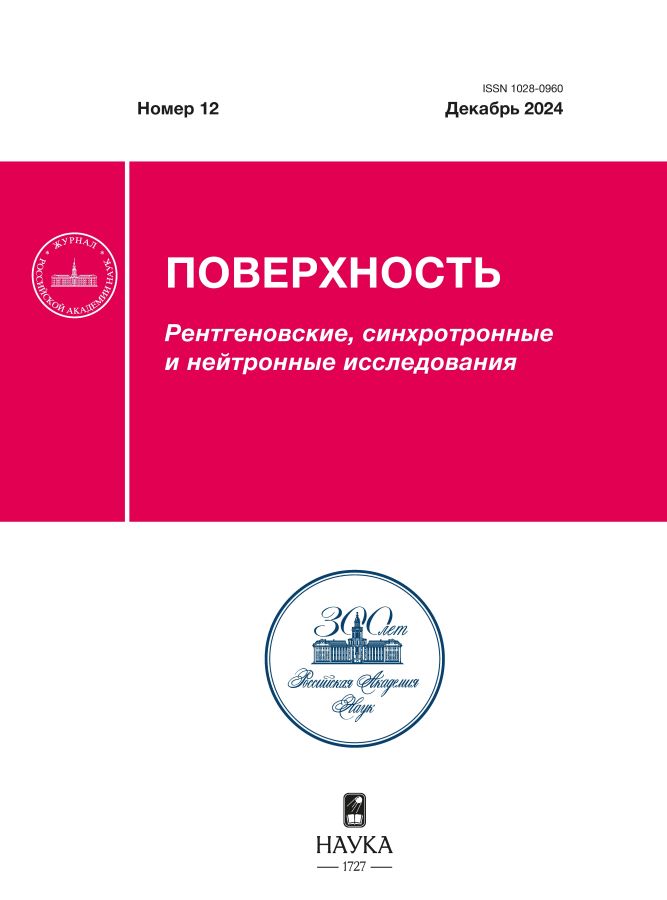Dependence of magnetic and magnetoimpedance properties of samples of amorphous Fe-based alloys on their shape. Influence of the glass shell thickness in the case of microwires
- Авторлар: Perov N.S.1, Rodionova V.V.2, Samchenko S.V.1, Molokanov V.V.3
-
Мекемелер:
- Lomonosov Moscow State University
- I. Kant Baltic Federal University
- A.A. Baikov Institute of Metallurgy and Materials Science
- Шығарылым: № 12 (2024)
- Беттер: 46-52
- Бөлім: Articles
- URL: https://edgccjournal.org/1028-0960/article/view/685354
- DOI: https://doi.org/10.31857/S1028096024120051
- EDN: https://elibrary.ru/QXDAWE
- ID: 685354
Дәйексөз келтіру
Аннотация
Amorphous magnetic metal alloys are a rather new class of materials compared to crystalline ones. They differ significantly from crystalline materials in their structure, physical and magnetic properties. The amorphous state of matter is a state in which there is no long-range order in the arrangement of atoms. The lack of long-range order often leads to changes in physical properties that are difficult or impossible to obtain in a solid with a crystalline structure. One important factor is the extremely small value of magnetocrystalline anisotropy, which leads to an increase in the contributions of magnetoelastic anisotropy and shape anisotropy. In the presented work, a comparative analysis of the magnetic properties of three types of samples prepared from amorphous Fe77.5Si12.5B10 alloy (ribbons, thick wires and glass-shell microwires) has been carried out. It is found that the impedance characteristics of all the samples are quite small, although it depends on the type of sample. For composite samples (glass-sheathed microwire), the magnetic properties strongly depend on both the thickness of the metallic core and the ratio of the total thickness of the microwire to the thickness of the metallic core. The obtained experimental results are presented in the form of graphical dependencies.
Толық мәтін
Авторлар туралы
N. Perov
Lomonosov Moscow State University
Хат алмасуға жауапты Автор.
Email: perov@magn.ru
Ресей, Moscow
V. Rodionova
I. Kant Baltic Federal University
Email: valeriarodionova@gmail.com
Ресей, Kaliningrad
S. Samchenko
Lomonosov Moscow State University
Email: perov@magn.ru
Ресей, Moscow
V. Molokanov
A.A. Baikov Institute of Metallurgy and Materials Science
Email: perov@magn.ru
Ресей, Moscow
Әдебиет тізімі
- Inoue A., Kong F. // Encyclopedia of Smart Materials. 2022. V. 5. P. 10. https://www.doi.org/10.1016/B978-0-12-803581-8.11725-4
- Zhukova V., Corte-Leon P., Blanco J.M., Ipatov M., Gonzalez-Legarreta L., Gonzalez A., Zhukov A. // Chemosensors. 2022. V. 10. № 1. P. 26. https://www.doi.org/10.3390/chemosensors10010026
- Золотухин И.В., Калинин Ю.Е., Стогней О.В. Новые направления физического материаловедения, Изд-во Воронежского государственного университета. 2000. 360 с.
- Corte-Leon P., Zhukova V., Chizhik, A., Blanco J.M., Ipatov M., Gonzalez-Legarreta L., Zhukov A. // Sensors. 2020. V. 20. No 24. P. 7203. https://www.doi.org/10.3390/s20247203
- A.Zhukov, M. Ipatov, M. Churyukanova, S. Kaloshkin, V. Zhukova // Journal of Alloys and Compounds. 2014. V. 586. P. 279. https://www.doi.org/10.1016/j.jallcom.2012.10.082
- Olivera J., De La Cruz-Blas C. A., Gómez-Polo C. // Sensors and Actuators A: Physical. 2011. V. 168. P. 90. https://www.doi.org/10.1016/j.sna.2011.04.012
- Zhukova V., Ipatov M., Zhukov A. // Sensors. 2009. V. 9. № 11. P. 9216. https://www.doi.org/10.3390/s91109216
- Li D.R., Lu Z.C., Zhou S.X. // J. Appl. Phys. 2004. V. 95. № 1. P. 204. https://www.doi.org/10.1063/1.1630697
- Zhukov A., Corte-Leon P., Gonzalez-Legarreta L., Ipatov M., Blanco J.M., Gonzalez A., Zhukova V. // J. Phys. D: Appl. Phys. 2022. V. 55. № 25. P. 253003. https://www.doi.org/10.1088/1361-6463/AC4FD7
- Mohri K., Uchiyama T., Panina L. V., Yamamoto M., Bushida K. // J. Sensors. 2015. V. 2015. P. 718069. https://www.doi.org/10.1155/2015/718069
- Молоканов В.В., Умнов П.П., Куракова Н.В., Свиридова Т.А., Шалыгин А.Н., Ковнеристый Ю.К. // Перспективные материалы. 2006. Т. 2. С. 5. https://www.doi.org/1028-978X
- Chizhik A., Zhukov A., Blanco J.M., Szymczak R. // J. Magn. Magn. Mater. 2022. V. 249. P. 99. https://www.doi.org/10.1016/S0304-8853(02)00513-9
- Zhukova V., Corte-Leon P., Blanco J.M., Ipatov M., Gonzalez J., Zhukov A. // Chemosensors. 2021. V. 9. № 5. P. 100. https://www.doi.org/10.3390/chemosensors9050100
- Panina L., Dzhumazoda A., Nematov M., Alam J., Trukhanov A., Yudanov N., Morchenko A., Zhukov A., Rodionova V. // Sensors. 2019. V. 19. P. 5089. https://www.doi.org/10.3390/s19235089
- Молоканов В.В., Шалыгин А.Н., Петржик М.И., Михайлова Т.Н., Филиппов К.С., Дьяконова Н.П., Свиридова Т.А., Захарова Е.А.// Перспективные материалы. 2003. Т. 10. № 1. P. 5. https://www.doi.org/1028-978X
- Дорофеева Е.А., Прокошин А.Ф. // ФММ. 1984. Т. 57. С. 500.
- Mohri K., Humphrey F.B., Kawashuma K., Kimura K., Mizutani M. // IEEE Trans. Magn. 1990. V. 26 № 5. P. 1789. https://www.doi.org/10.1023/A:1014451124945
- Taylor G.F. // Phys. Rev. 1924. V. 23. № 5. P. 655. https://www.doi.org/10.1103/PhysRev.23.655
- Бадинтер Е.Я., Берман Н.Р., Драбенко И.Ф., Заборовский В.И. Литой микропровод и его свойства. Кишинев: Штиннца, 1973. 273 с.
- Molokanov V.V., Shalygin A.N., Umnov P.P., Chueva T.R., Umnova N.V., Simakov S.V.// Inorg. Mater.: Appl. Res. 2019. V. 3. С. 463. https://www.doi.org/10.1134/S2075113319020278
- Самсонова В.В., Рахманов А.А., Настасюк А.Н., Якубов И.Т.., Антонов А.С. Влияние статических и динамических размагничивающих полей на магнитоимпеданс в микропроводе на основе кобальта. // Сборник трудов ХХ международной школы-семинара “Новые Магнитные Материалы Микроэлектроники”, Москва. 2006. С. 444.
- Zhukova V., Chizhik A., Zhukov A., Torcunov A., Larin V., Gonzalez J. // IEEE transactions on magnetics. 2002. V. 38. № 5. P. 3090. https://www.doi.org/10.1109/TMAG.2002.802397
- Zhanga K., Lvb Z., Yaoa B., Wang D. // J. Non-Cryst. Solids. 2005. V. 352. P. 78. https://www.doi.org/10.1016/j.jnoncrysol.2005.10.023
- Mohri K., Humphrey F.B., Kawashima K., Kimura K., Muzutani M. // IEEE Trans. Magn. 1990. V. 26. P. 1789. https://www.doi.org/10.1109/20.104526
- Рахманов А.А., Самсонова В.В., Антонов А.С., Перов Н.С. Особенности магнитных и магнитоимпедансных свойств аморфных микропроводов в стеклянной оболочке на основе железа. // Сборник трудов XX международной школы-семинара “Новые Магнитные Материалы Микроэлектроники”, Москва. 2006. С. 814.
Қосымша файлдар















